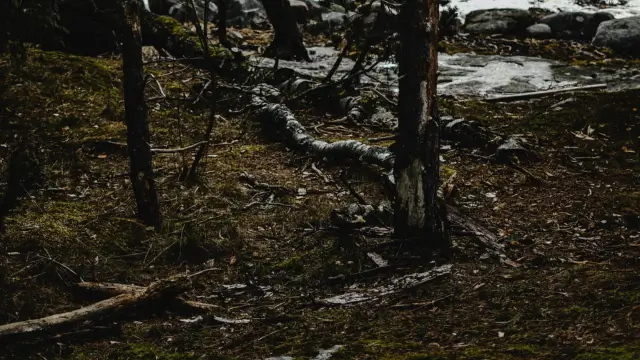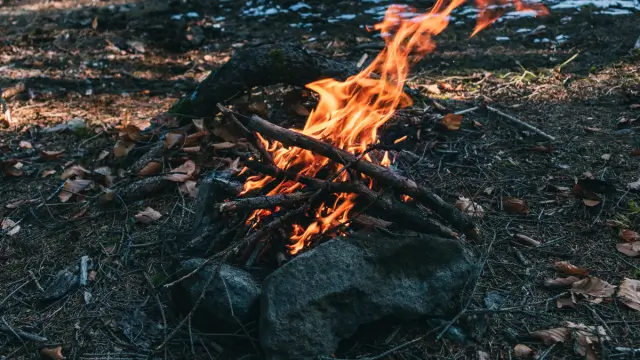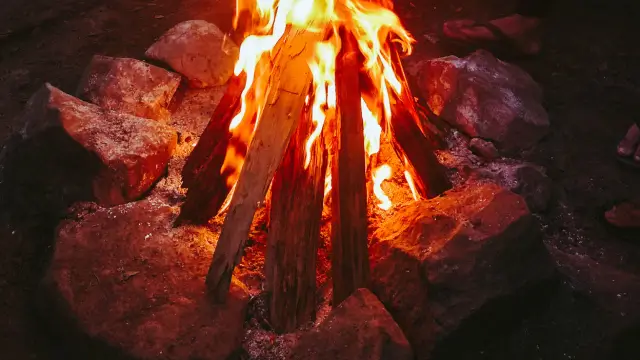How to start a fire when everything is wet?
Hey there, fellow winter wanderers! I’m Jaden Burley, your trusty outdoor enthusiast, and today I’m diving into a challenge that many of us have faced: how to start a fire when everything is wet around us.
Picture this: you’re out in the wild, rain pouring down, and your dreams of a crackling campfire seem to be fading away.
Fear not! In this guide, I’ll spill the beans on a technique that’s not just your average campfire hack but a game-changer.
So, why am I sharing this? Well, I’ve been there, battled the elements, and emerged victorious with a roaring fire to warm my frozen toes, and I want to make sure you never miss out on the warmth and magic of a roaring fire.
Finding Dry Tinder and Kindling

Alright, folks, let’s kick off with the first mission: finding tinder and kindling that won’t shy away from a bit of moisture. In the wet wilderness, you’ve got to be a detective. Look for the gold mines of dryness:
- Underneath Tree Canopies: Explore the sheltered zones beneath the trees. Those evergreen branches act like nature’s umbrella, keeping the ground underneath surprisingly dry.
- Inside Dead Standing Trees: Nature’s storage cabinet! Check for dead standing trees; their core often remains dry, providing you with tinder that’s ready to spark.
- Under Rock Overhangs: Nature’s own makeshift roof! Rocks can shield tinder from rain. Be cautious and only go for the dry spots.
My favorite tricks involves using a good ol’ campfire tool. Grab a stick and strip off the wet bark, revealing the treasure within—the dry inner layers. Now, here comes the magic: peel this golden wood into shavings, and ta-da! You’ve got the perfect tinder, even in the midst of a downpour.
What’s even better? This technique isn’t just for tiny twigs; it works like a charm for larger pieces of wood too.
Pro Tip: If you’ve got a hatchet handy, use it to split those larger sticks and logs into small pieces, about 1/2 inch thick. You’ll unveil the dry core, a hidden gem waiting to ignite your winter wonderland.
Building a Rain-Resistant Fire Structure

Now that you’ve got your arsenal of dry fuel, it’s time to build a fortress for your fire. Here’s the blueprint for a rain-resistant structure:
- Platform Base: Create a platform using dry logs or rocks. Elevate your fire above ground to prevent moisture from seeping in.
- Lean-To Shelter: Build a lean-to using large logs or rocks to shield your fire from the wind and rain. Face the open side away from the prevailing wind for extra protection.
- Overhead Cover: Fashion a makeshift roof using a tarp, poncho, or even large leaves. This acts as your fire’s umbrella, keeping the sizzle in the flames and the sputter out.
- Build a teepee fire: A teepee fire is a good way to start a fire in wet conditions because it allows for good airflow and helps to dry out the wood as it burns. To build a teepee fire, place a small bundle of kindling in the center of your fire ring. Then, lean larger pieces of wood against the kindling in a teepee shape.
Using Fire Starters to Ignite Wet Tinder
Now, let’s talk ignition! Even the wettest tinder can’t resist a good fire starter. Here’s the lowdown:
- Waterproof Fire Starters: Invest in reliable waterproof fire starters. These little champions can turn damp conditions into a fiery spectacle. Woohoo!
- DIY Fire Starters: Get creative! Make your own fire starters using cotton balls soaked in petroleum jelly or dryer lint mixed with wax. These homemade heroes burn through dampness like it’s their mission.
- Elevate Your Tinder: Place your wet tinder on a raised platform above the flame. This gives it a fighting chance to catch fire before the moisture puts up a defense.
Pro Tip: Be generous with the fire starters. Using a few extra can make all the difference, especially in damp conditions.
Read more about: How To Start A Fire With Sticks
Keeping the Fire Alive in Wet Conditions

So, you’ve conquered the start, but the battle isn’t over. Keeping that fire alive is the next challenge. Here’s the game plan:
- Constant Attention: In wet conditions, a fire demands a watchful eye. Keep feeding it small, dry fuel regularly to maintain a healthy blaze.
- Fire Refuges: Build mini refuges for your fuel. Use rocks or logs to create small, dry pockets within your fire structure to store additional fuel.
- Firewood Prep: If you anticipate rain, prep your firewood in advance. Strip off wet bark and store the wood under a makeshift shelter to keep it as dry as possible.
Pro Tip: If you’ve got a trusty tarp, use it strategically to create a makeshift shelter for your fire. This not only protects it from rain but also amplifies the heat—talk about a win-win!
Safety First
Fires, even in the best conditions, demand respect. In wet environments, that respect needs to be taken up a notch. Here are some safety tips to keep in mind:
1. Choose your site wisely: Look for elevated ground to set up your fire. Avoid low-lying areas where water might accumulate. Clear the ground from any snow or puddles. A dry foundation is your first line of defense.
2. Create a barrier: Build a ring of rocks around your fire site. This not only contains the flames but also provides a protective barrier against the damp surroundings.
3. Keep it contained: Opt for a portable fire pit or construct a simple one with rocks. This helps in keeping the fire contained and manageable.
4. Gather more wood than you think you need: In wet conditions, wood burns slower. Ensure you have a substantial amount of dry wood ready before you even strike that first match.
5. Have essential tools: Pack a reliable fire starter, waterproof matches, and a lighter. These tools can be game-changers in damp situations. Read more about How To Start A Fire Without A Lighter.
6. Mind the wind: Be aware of the wind direction. If possible, position yourself with your back to the wind to shield the flames.
7. Use dry starter material: If you have access to any dry leaves, twigs, or newspaper, use them as starter material. This can give your fire a head start.
8. Keep extinguishing tools handy: Have a bucket of water or a fire extinguisher nearby. Even in wet conditions, fires can spread, and it’s crucial to be prepared.
9. Monitor your fire: Once your fire is roaring, keep a watchful eye. Sparks can travel, and it’s essential to ensure they don’t ignite surrounding dry vegetation.
10. Extinguish properly: When you’re done enjoying the warmth of your fire, extinguish it completely. Use water to douse the flames and stir the ashes to make sure there are no hidden embers.
Conclusion
There you have it, intrepid campers! Starting a fire when everything is wet might seem like a Herculean task, but armed with these tips, you’re equipped to face the challenge head-on. Remember, in the winter wilderness, adaptability is your greatest skill.
So, go out there, embrace the elements, and let the warmth of your triumphant fire be the beacon of your camping victory. Stay dry, stay warm, and happy camping!
Related topics:
How To Start A Fire With Rocks?
Best Winter Gloves For Men Of 2023-2024
Best Tent Heaters For Cold Weather Camping